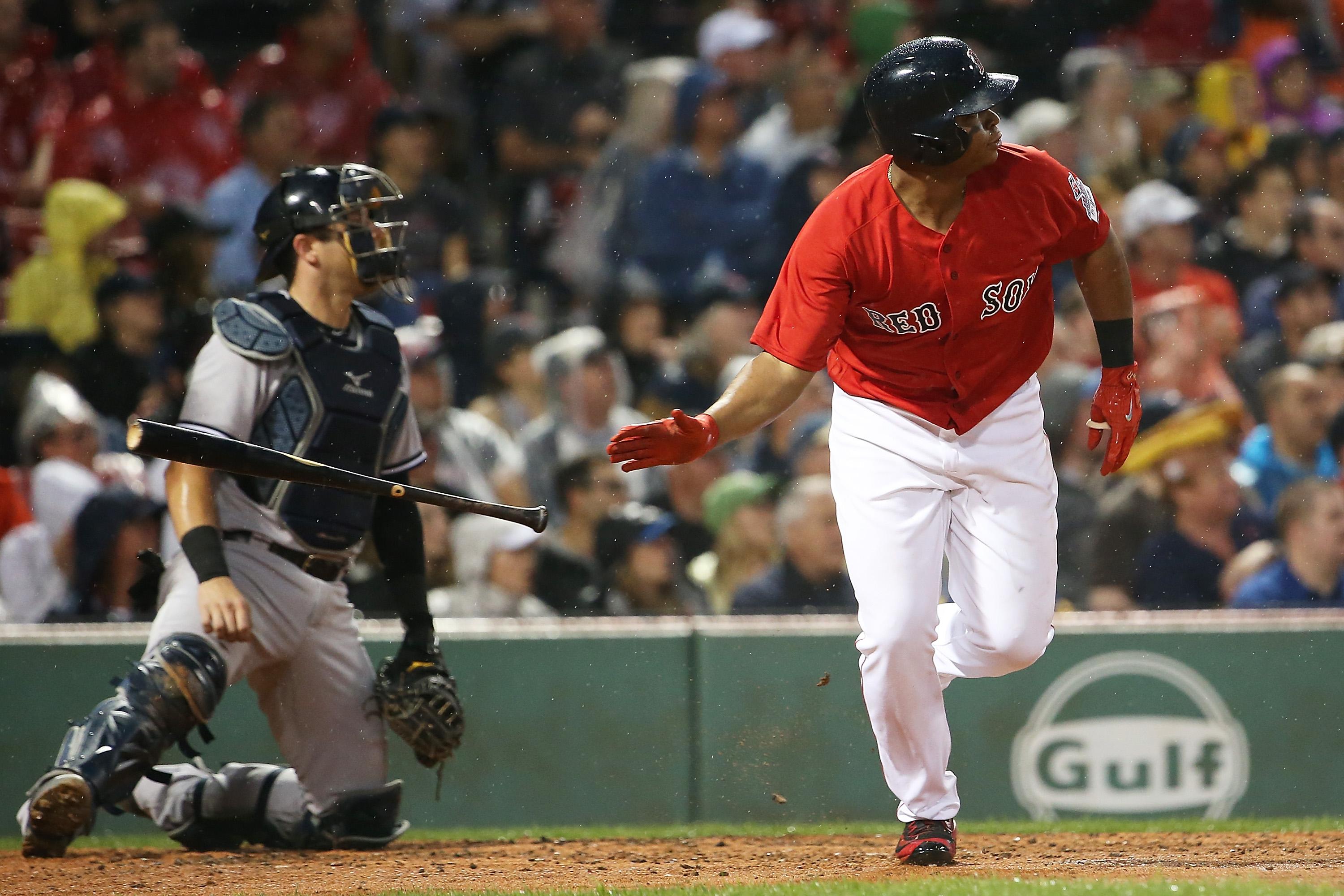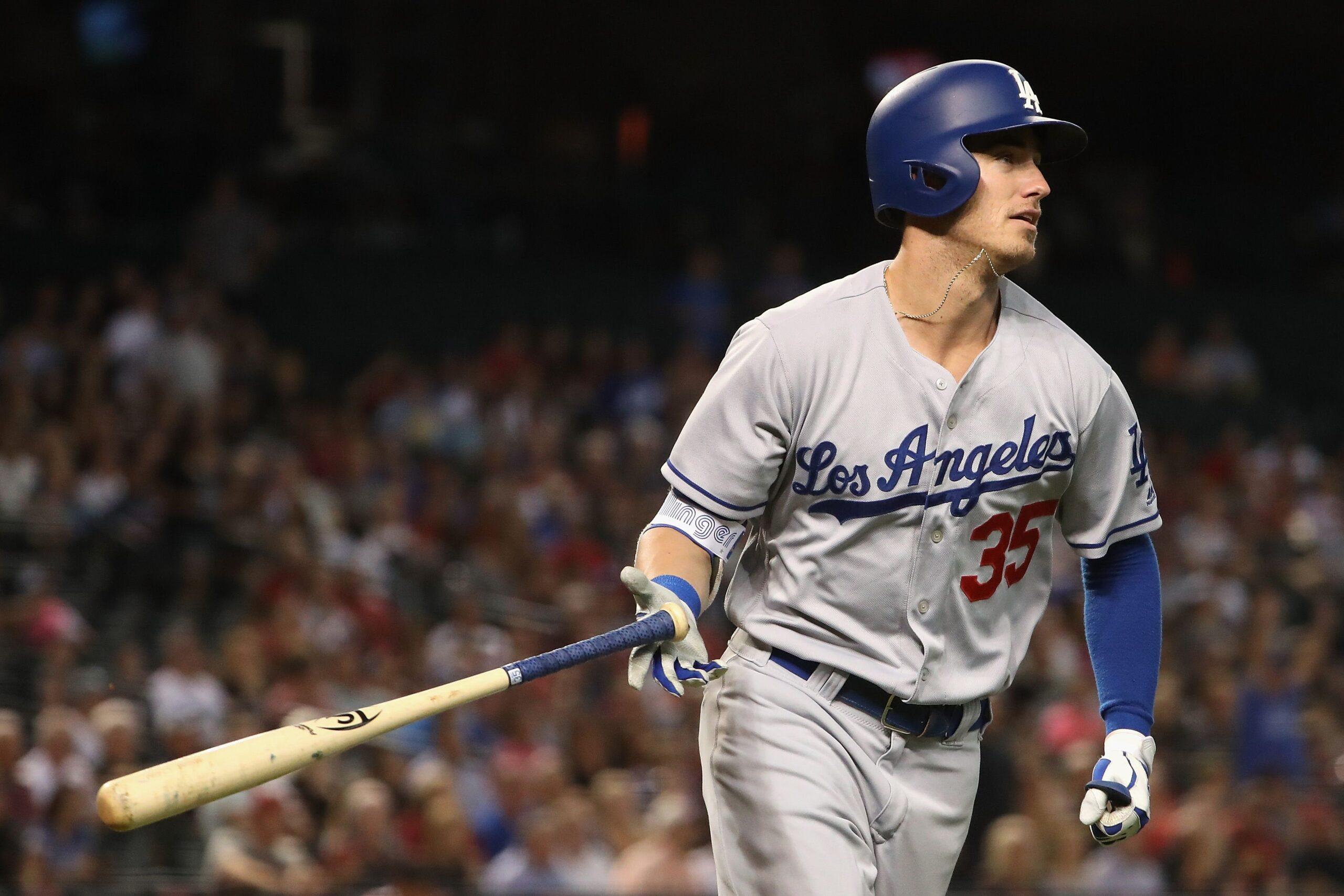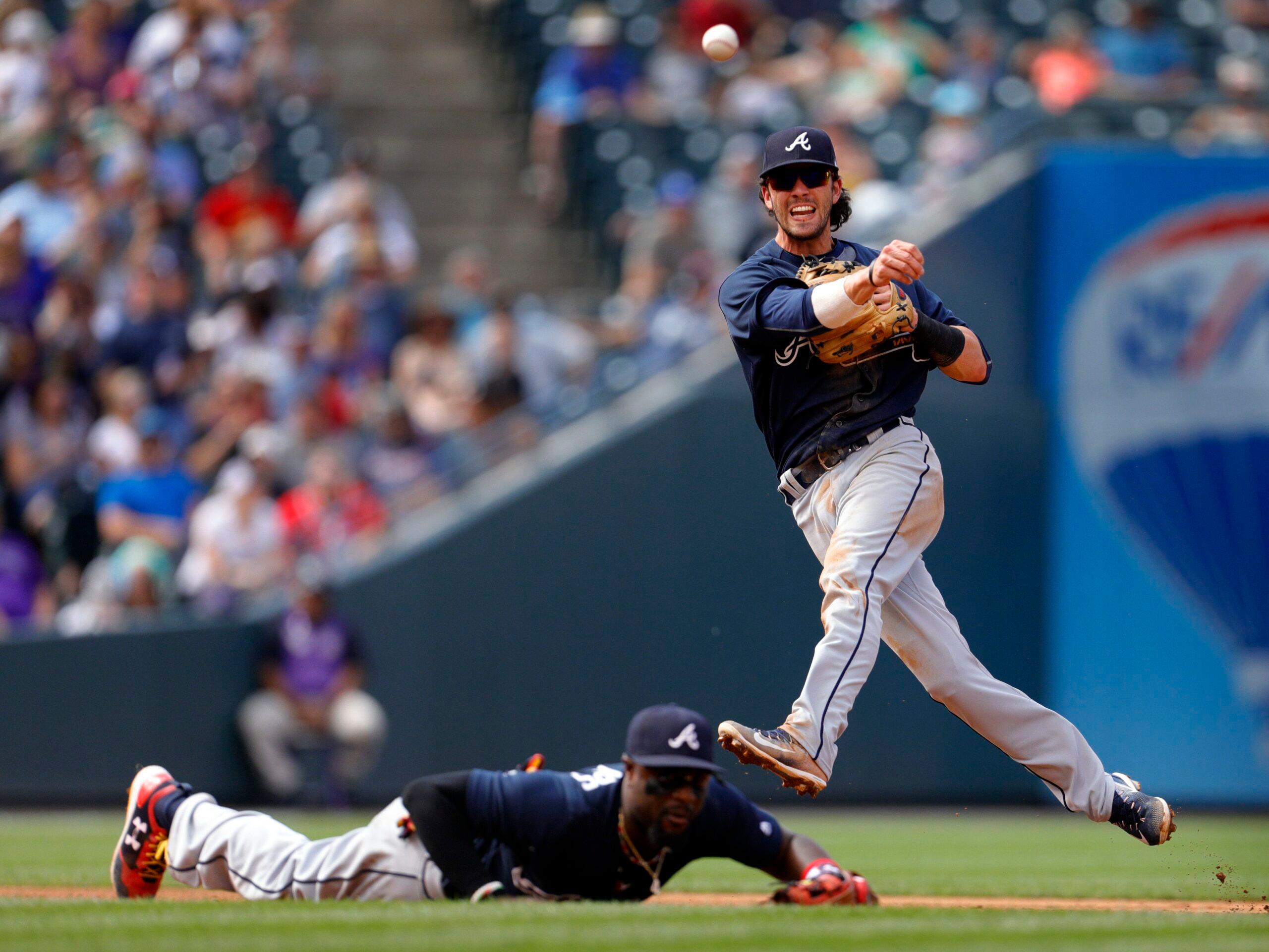
The 2015 class of rookie position players—Kris Bryant, Carlos Correa, Francisco Lindor, just to name a few—probably spoiled us a little. That year, Odúbel Herrera was a 3.8-win player, Devon Travis was a 2.4-win player in just 62 games, and the two combined for zero Rookie of the Year votes. This year’s class is similarly deep, particularly when it comes to players who put up elite numbers from the word “Go.”
The most recent player to do that is Red Sox third baseman Rafael Devers, a 20-year-old who’s currently hitting .312/.373/.613 in 102 big league plate appearances. It’s a small sample, sure, but only three 20-year-old rookies have put up a .986 OPS in 100 or more plate appearances: Alex Rodriguez, Ted Williams, and Mel Ott. It says something that not only have just three guys done that in the past 100-plus years, but that all three went on to become all-time greats.
What we’ve seen from Devers so far is encouraging, and his positive attributes are obvious: a great hit tool for a 20-year-old getting his first look at big league pitching, with plenty of power, specifically a disturbing amount of opposite-field power.
So far, so good, but Devers still has a lot to prove. Though he hits the ball hard, he swings and misses more than you’d like (his 76.5 percent contact rate would be in the bottom half of the league if he had enough plate appearances to qualify), and he hasn’t posted a double-digit walk rate since rookie ball. Those aren’t fatal flaws by any stretch of the imagination—Adrián Beltré swings at everything and he’s going to be a first-ballot Hall of Famer—but they can be a problem for players who have trouble adapting once pitchers realize they can’t hit everything.
Devers’s body is also worth watching—he’s fine at third base, but he might grow off the position at some point, as young power-hitting third basemen often do. That would limit his value as an all-around player, particularly compared with those of his contemporaries who can play up-the-middle positions.
That’s why, despite his sudden rise to prominence, Devers is not one of the two power-hitting rookies (Aaron Judge and Cody Bellinger) who’ve captured the national imagination already this season. Nor was he one of the two preseason favorites to win the Rookie of the Year (Dansby Swanson and Andrew Benintendi). Nor was he ranked as the no. 1 prospect in baseball at midseason by Baseball America, Baseball Prospectus, and Eric Longenhagen of FanGraphs (Yoan Moncada), nor was he ranked no. 1 by ESPN’s Keith Law and no. 2 by FanGraphs and BP (Amed Rosario).
So it’s time to play a game of “Who Ya Got?” between Devers and these other six top rookies. (Not to denigrate Ian Happ’s swing and positional flexibility, Ozzie Albies’s speed, or Jorge Alfaro’s “What If Kam Chancellor Could Catch?” upside, but we’ve got to draw a line somewhere.) We know how good Devers has been, but who has the best combination of talent, production, high floor, and high ceiling?
Aaron Judge
The biggest reason I’m tempering my excitement over Devers is what happened to Judge. Any talented hitter can post a 1.000 OPS over 100 PA, but you can’t project his value long-term without a longer look. Right now, Devers has an OPS+ of 152. Nobody who’s played at least half of his games at third base has ever posted a 150 OPS+ in a career of 3,000 PA or longer, and only Mike Schmidt, Eddie Mathews, and Chipper Jones have even cracked 140. Not even the most ardent Red Sox homer is going to look you in the eye and tell you Devers is going to be one of the top five players ever at his position, so we all agree he’s going to cool off somewhat.
We know this because for about three months, Judge looked like the best hitter ever. Now, Judge is hitting .186/.350/.372 in the second half, which means that his star-making first half is sandwiched between two streaks of sub-.200 batting average. Judge might or might not be dealing with a bum shoulder, and pitchers and umpires are both adjusting to the Fresno Flogger, so the hype has cooled off considerably. Those extenuating circumstances might explain Judge’s cold streak, but part of being a superstar is adapting to new strategies and managing injuries, and Judge has to prove that he can do both.
It’s still possible that Judge will recover and turn back into the kind of player who just hits the ball so hard he can sustain a .400 BABIP, but he could also land somewhere between what he is now and what he was the first few months of this season. Most importantly in this comparison with Devers, Judge is four and a half years older, with a body that has already forced him into an outfield corner. Devers might have to move to first base someday, but for now he’s a much more valuable defensive player, and his age makes him a far better prospect.
Who I’ve Got: Devers

Cody Bellinger
Like Judge, Bellinger is older than Devers and lags behind in defensive value and hit tool, but those problems aren’t as extreme in Bellinger’s case. Bellinger’s made contact on 70.7 percent of his swings this year, which is 140th out of 153 qualified hitters. But the two guys right in front of him on that list are The Mighty Giancarlo Stanton and Nelson Cruz. A low contact rate isn’t a big deal for players who can draw a few walks and get their money’s worth when they do make contact. That’s certainly the case for Bellinger.
And while Bellinger is a first baseman right now, he’s only about 15 months older than Devers, rather than almost five years, and he’s a very good athlete for a player his size, with nine stolen bases on 11 tries. Bellinger’s played almost half his games in the outfield this year, and could probably play center without embarrassing himself if he needed to.
I’d still take Devers if I had to choose between him and Bellinger, because when push comes to shove I’ll bet on the younger player with the better hit tool and the ability to play a tougher position over the player with more power and patience. But it’s close enough that if those attributes, plus a slightly longer track record, drew you to Bellinger, I wouldn’t argue.
Who I’ve Got: Devers
Andrew Benintendi
It’s hard to feel anything but disappointed in Benintendi’s first full season in the big leagues, but that’s got more to do with hype than anything else. Benintendi was a nobody in 2014 but came into this season ahead of Devers on most, if not all, Red Sox prospect rankings. In between, he posted an outrageous sophomore season at Arkansas (.376/.488/.717, with 20 home runs and 24 steals in 65 games), then posted a .976 OPS across two minor league levels in 2015. Last year, he had a .910 OPS at two minor league stops, then made himself Boston’s everyday left fielder for the final two months of the 2016 season, hitting .295/.359/.476 as a 21-year-old rookie. Given a normal aging curve, that start hinted at future star potential once he hit his mid-20s.
Even after a slow start, Benintendi’s been about a league-average left fielder this year, which is impressive on its own for a 22-year-old in his first full big league season. If he’s lost ground to Devers in hype, it’s not for lack of recent production. When Devers debuted on July 25, Benintendi was hitting .264/.346/.414, which isn’t great for a left fielder, but on a team that didn’t have a plus-plus defensive center fielder like Jackie Bradley Jr., Benintendi would be playing center, which would have goosed his value. Not only that, but the Devers hype coincided with a super-hot first week or two in the big leagues, after which the third baseman has looked a little more normal.
Since July 25, Devers is hitting .312/.373/.613 and Benintendi is hitting .333/.402/.578. Benintendi is also a better baserunner, and despite being two years older than Devers, he is capable of playing a tougher defensive position. Before the season, Benintendi was considered to be the better prospect, and the only reason to revise that evaluation now would be if you were going to somehow criticize Benintendi for being an OK big leaguer while Devers was still in the minors. I think we’ve seen the best of Devers and the worst of Benintendi this season, and in a few years, the choice between the two will be obvious.
Who I’ve Got: Benintendi
Amed Rosario
OK, I know I had to explain why Devers wasn’t Chipper Jones, and I know Rosario’s walked once in 80 big league PA, but you need to start chanting the phrase “plus defensive shortstop” over and over like a mantra, because that’s what gives Rosario—assuming he doesn’t fall victim to the poltergeist that lives in Citi Field—the potential to be special.
Rosario is a plus defensive shortstop and grades out as a 60 or 70 runner on the 20-80 scale. The 21-year-old Mets shortstop should fill out his body from his current Garrett Hedlund–in–Four Brothers build to something more along the lines of Garrett Hedlund in Troy, in which case he’ll add power and probably walk more if pitchers are afraid to pound the zone. Either way, Devers profiles as a superior hitter, but that doesn’t mean he’ll be the superior all-around player.
Let’s say Rosario is a plus-10-run defensive shortstop and maybe not a Billy Hamilton–type basestealer but a Mookie Betts–type baserunner, and Devers is an average defensive third baseman and an average baserunner. Both Baseball-Reference and FanGraphs give shortstops a five-run positional adjustment over third basemen, and both rated Betts as a nine-run baserunner last year. Add in 10 runs’ worth of defensive value and that’s roughly a 20-to-25-run gap that Devers has to make up on Rosario with his bat. Last year, that was the difference in batting runs between Kyle Seager, who finished 12th in MVP voting, and Marcus Semien, who posted a 99 OPS+, just to give an example of how much of a buffer Rosario has to play with.
There’s also the possibility that Devers bulks up and has to move across the diamond. That’s not the end of the world—Miguel Cabrera, Jim Thome, and Albert Pujols all fit that description—but a move to first subtracts another 10-15 runs from Devers’s value relative to Rosario, who’s a virtual lock to stay at short for the next decade.
All of this illustrates how valuable young, up-the-middle players are if they can hit even a little. And that’s pretty much all Rosario has to do to be an impact regular.
Who I’ve Got: Rosario

Dansby Swanson
The book on Swanson coming out of Vanderbilt was that he had a little bit of everything: above-average hitter, above-average power, above-average runner, average-to-above-average defensive shortstop. He went ahead of the other top college bats in his draft class (Happ, Benintendi, and Houston’s Alex Bregman) because like them he was a polished hitter, but he had an extra dash of size and athleticism.
But that size and athleticism aren’t enough to carry him if he’s not hitting, which is how the heavy preseason favorite for NL Rookie of the Year found himself headed back to Triple-A with a .213/.287/.312 batting line, just as Devers was being called up.
Like Benintendi, Swanson’s heated up of late—he’s hitting .304/.400/.457 since he was recalled on August 9—but he still lacks the upside of the other five players on this list. And while it looks like he’s started to figure out whatever was ailing him through July, it had never occurred to me before this year that Swanson wouldn’t hit in the majors, and now that it’s happened before it’s something to worry about going forward.
Who I’ve Got: Devers
Yoan Moncada
Like Benintendi and Rosario, Moncada is a better athlete with more defensive potential than Devers, though the difference between third and second isn’t nearly as big as the gap between third and shortstop. Moncada could also end up being a better hitter than Devers, but that’s far from a certainty.
Switch hitters with a power-speed combination like Moncada’s don’t come around more than once or twice in a generation, and that kind of potential is hard to give up on. There’s really only one tool Moncada has left to develop, but it’s a big one. To quote Moncada’s write-up in the BP midseason top 50: “Moncada may end up more of a four-tool player, and when the missing tool is hit, the profile can get volatile. There’s potential for a lot of swing-and-miss here, and while a .230- or .240-hitting second baseman with pop is still a regular, it’s not an impact one.”
Considering that the hit tool is never going to be an issue with Devers, and that Moncada’s a year and a half older, it’s a little scary to bet big on the White Sox second baseman if there’s a distinct possibility that he might end up playing like one of Danny Espinosa’s good years. But there’s also the possibility that Moncada turns into the best parts of José Altuve, mixed with the best parts of Chase Utley, in Le’Veon Bell’s body.
All of this is to say that there’s a point at which Moncada hitting .196/.328/.364 would bother me enough to cause me to pick Devers, but we’re not there yet.
Who I’ve Got: Moncada